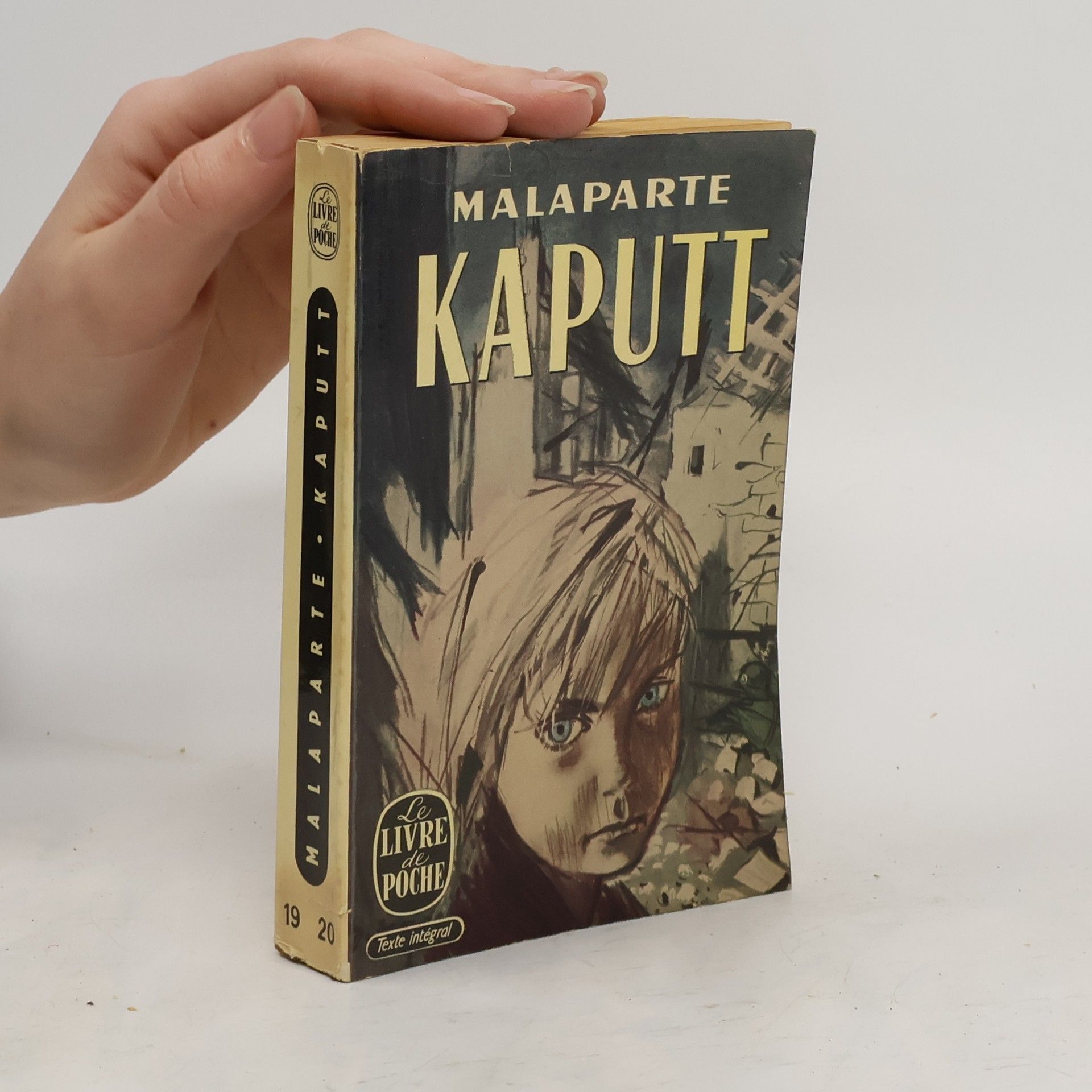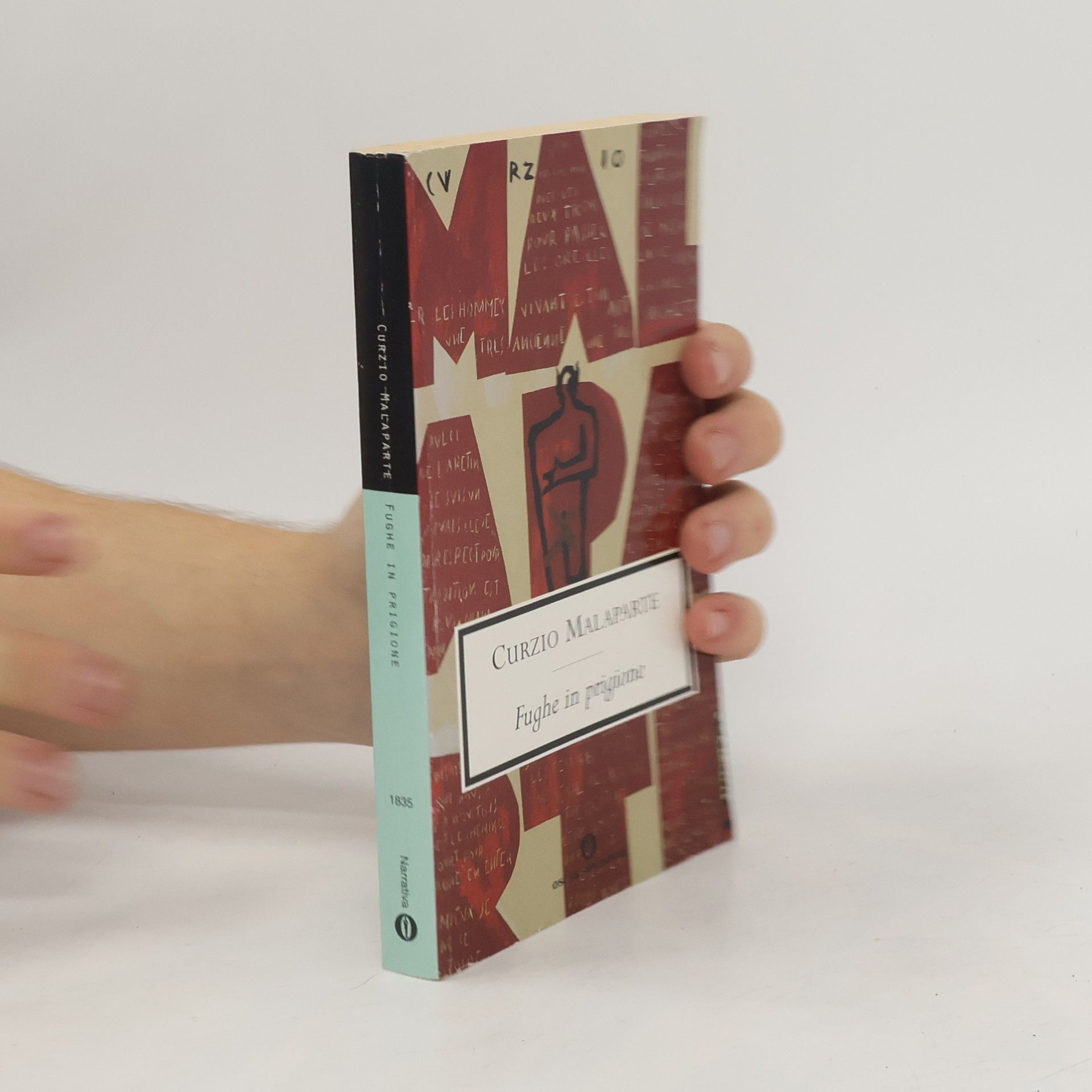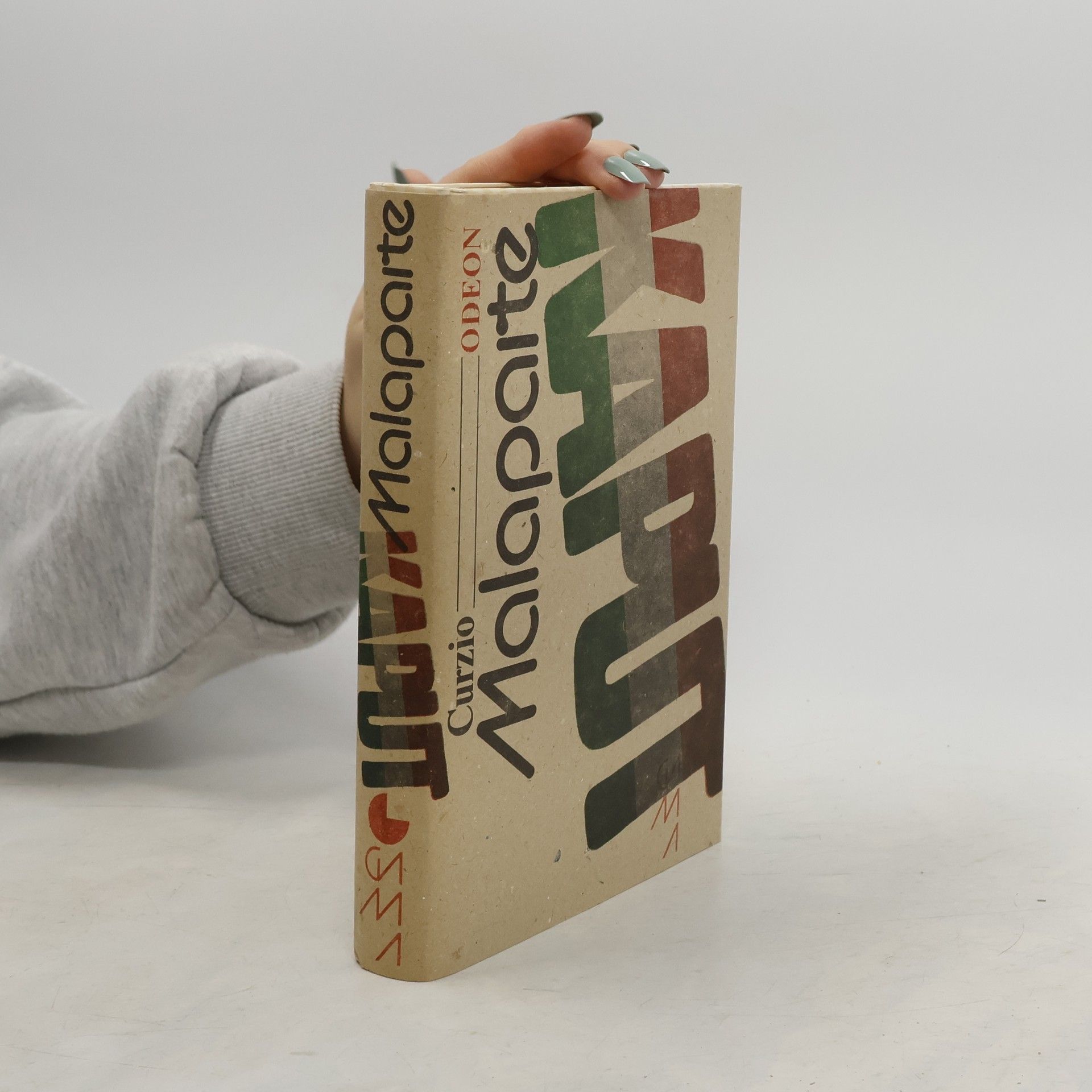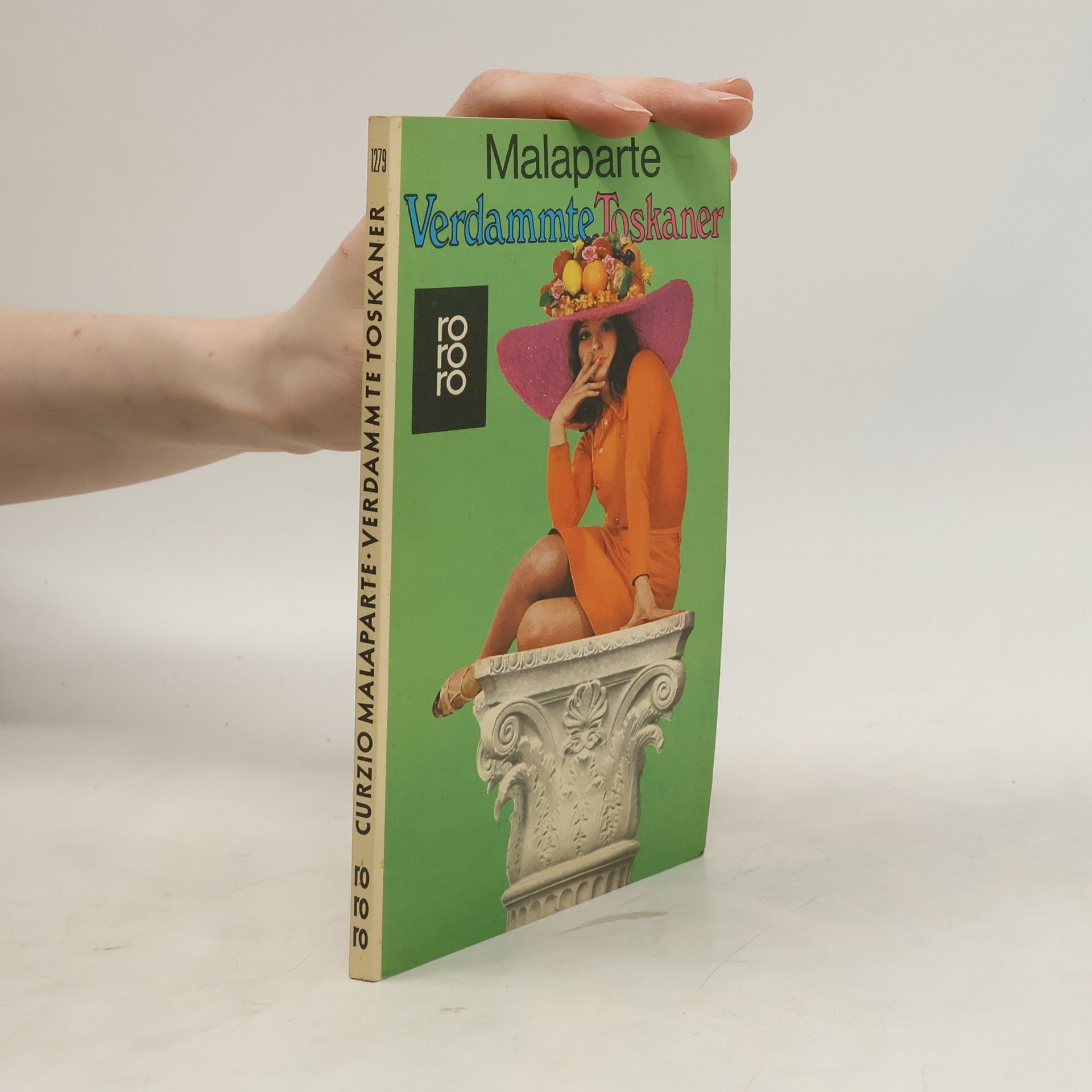Curzio Malaparte Livres
Cet auteur italien, connu pour ses observations percutantes et son écriture provocatrice, explore les aspects sombres de la nature humaine et les complexités de l'Europe de l'entre-deux-guerres. Ses œuvres, souvent ancrées dans ses expériences étendues en tant que journaliste et diplomate, offrent un regard sans complaisance sur la politique et la société. À travers un style distinctif, il capture les tensions et les ironies de l'époque, offrant aux lecteurs des réflexions incisives et troublantes. Son écriture demeure un témoignage puissant des complexités du monde et des motivations humaines.







The Skin
- 343pages
- 13 heures de lecture
This is the first unexpurgated English edition of Curzio Malaparte’s legendary work The Skin. The book begins in 1943, with Allied forces cementing their grip on the devastated city of Naples. The sometime Fascist and ever-resourceful Curzio Malaparte is working with the Americans as a liaison officer. He looks after Colonel Jack Hamilton, “a Christian gentleman . . . an American in the noblest sense of the word,” who speaks French and cites the classics and holds his nose as the two men tour the squalid streets of a city in ruins where liberation is only another word for desperation. Veterans of the disbanded Italian army beg for work. A rare specimen from the city’s famous aquarium is served up at a ceremonial dinner for high Allied officers. Prostitution is rampant. The smell of death is everywhere. Subtle, cynical, evasive, manipulative, unnerving, always astonishing, Malaparte is a supreme artist of the unreliable, both the product and the prophet of a world gone rotten to the core.
The Kremlin Ball
- 223pages
- 8 heures de lecture
"Perhaps only the impeccably perverse imagination of Curzio Malaparte could have conceived of The Kremlin Ball, which might be described as Proust in the corridors of Soviet power. The book is set at the end of the 1920s, when the Great Terror may have been nothing more than a twinkle in Stalin's eye, but when the revolution was accompanied by a growing sense of doom. In Malaparte's vision it is from his nightly opera box, rather than the Kremlin, that Stalin surveys Soviet high society, its scandals and amours and intrigues among beauties and bureaucrats, including the legendary ballerina Marina Semyonova and Olga Kameneva, a sister of the exiled Trotsky, who though a powerful politician is so consumed by dread that everywhere she goes she gives off the smell of rotting meat. This extraordinary court chronicle of Communist life (for which Malaparte also contemplated the title God Is a Killer) was published posthumously and appears now in English for the first time"--
Diary of a Foreigner in Paris
- 360pages
- 13 heures de lecture
"Every "diary" is a portrait, chronicle, tale, record, history. Notes taken day by day are not a diary but merely moments selected at random in the current of time, in the river of the passing day. A "diary" is a tale: the tale of a tranche de vie (the very definition of the novel, according to one celebrated school), of a period, a year, many years of our life. And as life follows the logic of a tale, it has a beginning, middle, and end (a life is a series of beginnings, middles, and ends, within the closed circle of the beginning, middle, and end of life, in the circle of life). It's not true that a "diary" begins by chance, progresses by chance, has no conclusion but the end of life. A diary, like every tale, calls for a beginning, a plot, and a denouement. The subject of Diary of a Foreigner in Paris is my return to Paris after a fourteen-year absence. It's my discovery of a new France, of a new French people. It's the portrait of a moment in the history of the French nation, of French civilization, that coincides with a particular moment in my life, in the story of my life. I don't claim to be breaking new ground in the "diary" genre. I'm simply suggesting that a diary is a tale, as a play is a tale. And now I arrive at my point: a "diary" is a theatrical work brought to the boards of the page. It's the point at which a tale comes closest to the theater. Everything there tends toward an ending, a conclusion, following the classical rules of unity, but centered on the character called "I." It's the Das Da, Kafka's "present moment," brought to the stage-page. My "diary," at least, is this."-- Provided by publisher
Pubblicate in varie edizioni, nel 1936, nel 1943 e, infine, nel 1954 (quella qui riproposta), queste "Fughe in prigione" sono state scritte durante i periodi trascorsi da Malaparte nel carcere romano di Regina Coeli e al confino di Lipari, dove venne inviato per i suoi atteggiamenti liberi, provocatori, non allineati al regime fascista, che anzi attaccò violentemente. A queste pagine del tempo di prigionia Malaparte volle aggiungere alcuni testi scritti in Francia e in Inghilterra poco prima dell'arresto. Si tratta di memorie, riflessioni di carattere culturale, studi letterari nei quali l'autore sembra cercare un rifugio e una via di fuga per lo spirito.
Proslulá kniha reportáží známého italského novináře je věnována tragédiím 2. světové války na téměř celém území Evropy. Kniha je rozdělena do několika částí (Koně, Krysy, Psi, Sobi, Mouchy, Ptáci), jejichž účinek se neustále stupňuje. Jako celek je kniha nevšedním dokumentemo průběhu událostí zejména na fašistické frontě a vizionářským svědectvím o porážce nacismu. Jednotlivé příběhy se pohybují mezi fakty a fikcí, mezi realitou a fantazií a tvoří vrstevnaté podobenství o válce a zároveň je jednoznačným varováním pro budoucnost. V cyklu šesti obrazů je lidský úděl zachycen v okamžicích nejhlubšího ponížení, ale také i živé naděje.
La Biblioteca di Repubblica - 96: La pelle
- 315pages
- 12 heures de lecture
Un viaggio allucinato e infernale nella Napoli appena liberata dagli americani, un susseguirsi di storie al limite della visionarietà nei meandri di una città distrutta, sfinita, quasi in putrefazione, una grottesca rappresentazione del dolore, della bestialità, della miseria e della turpitudine: il romanzo-scandalo di Curzio Malaparte pare voler colpire con tutti i mezzi a disposizione le pigre coscienze dei lettori, proponendo un vasto e terrorizzante campionario di orrori e di abiezioni. Dal pranzo del generale Cork, in cui viene imbandita una bambina, alla vendita della ragazzina ancora vergine, al frenetico sabba omosessuale della “figliata”, si delinea a poco a poco un universo oscuro e perverso, che ha smarrito il senso della distinzione fra bene e male, e che tutti ingloba, sia vincitori che vinti, in un vischioso e insensato Nulla, ove l’unica cosa che resta da fare è «lottare e soffrire per la propria pelle».



